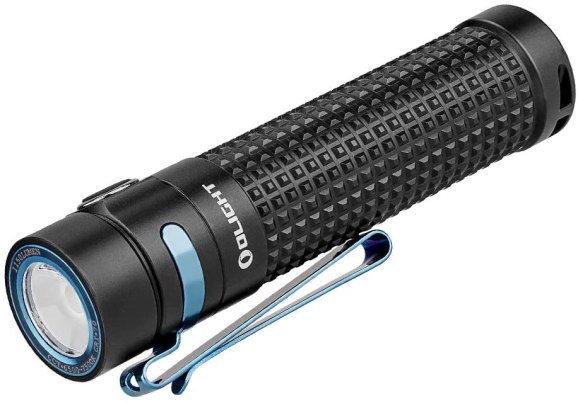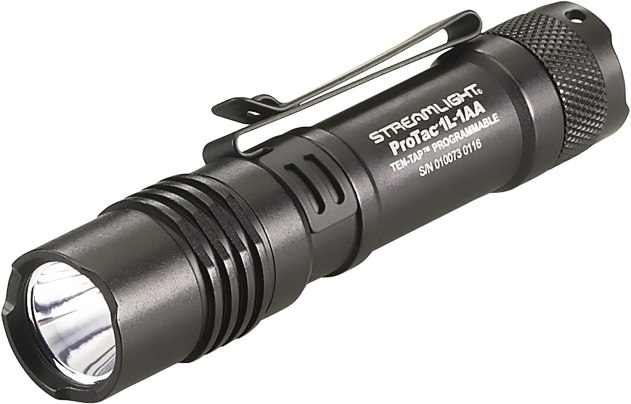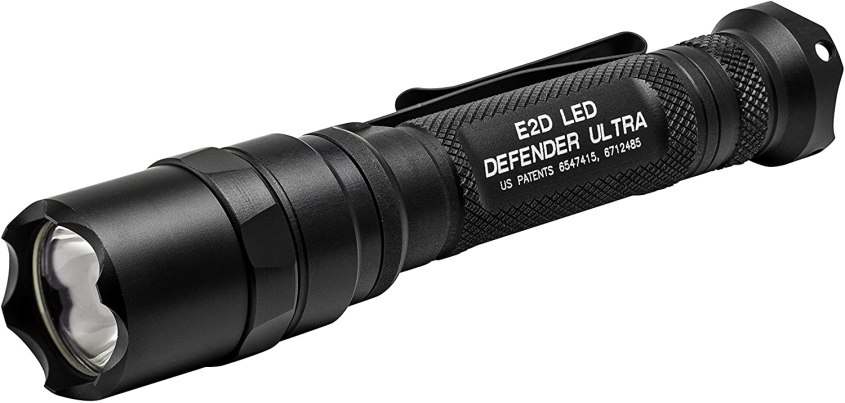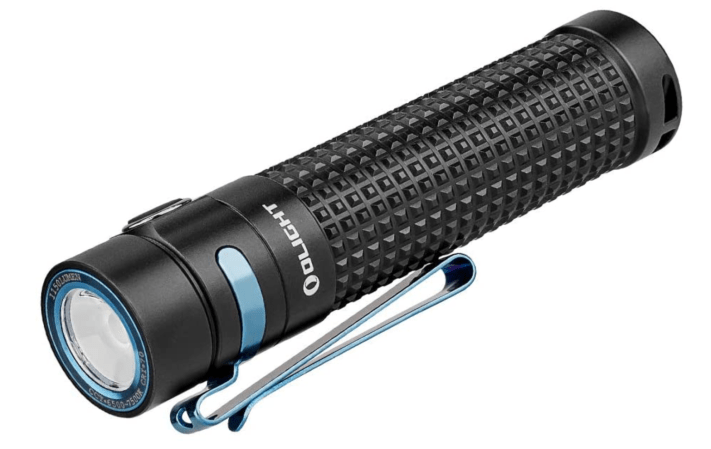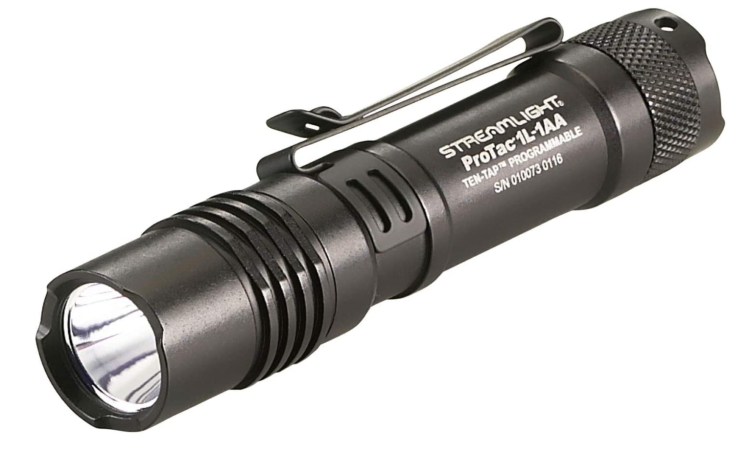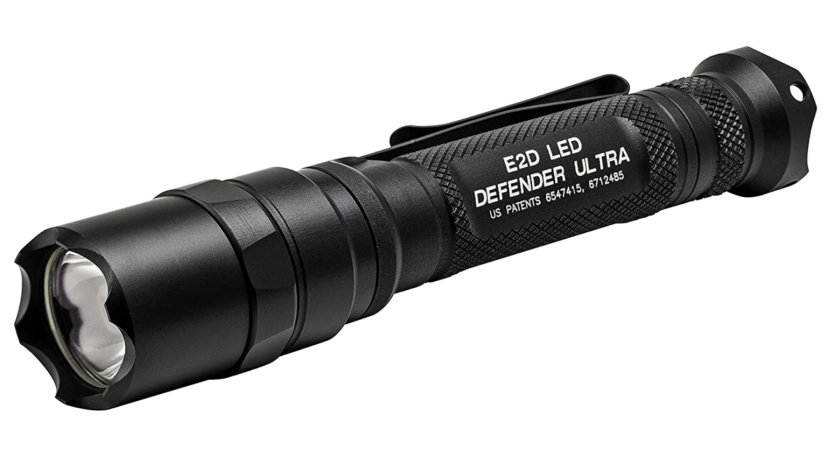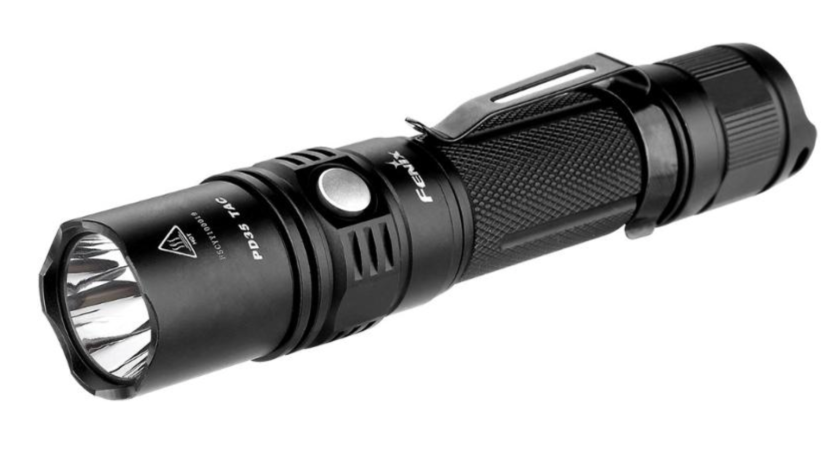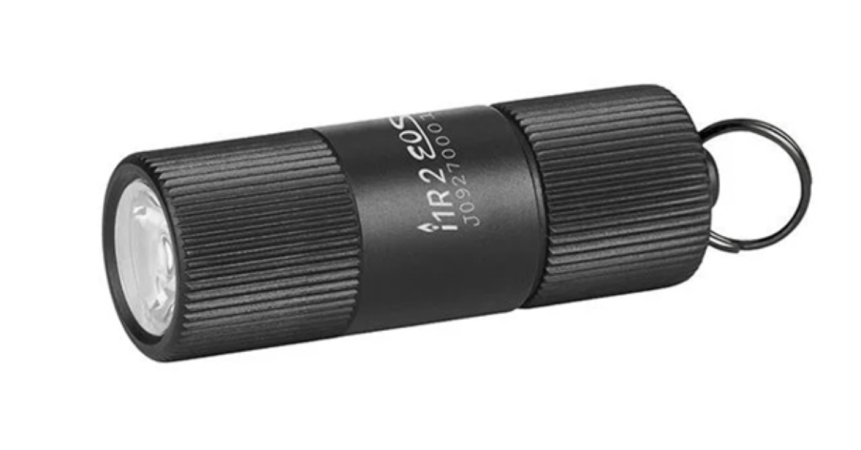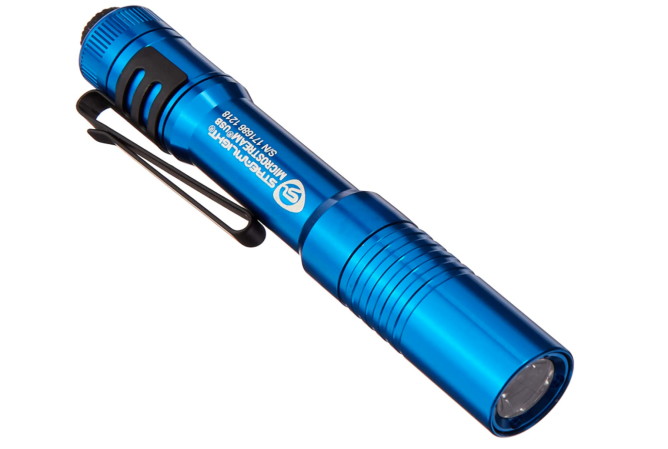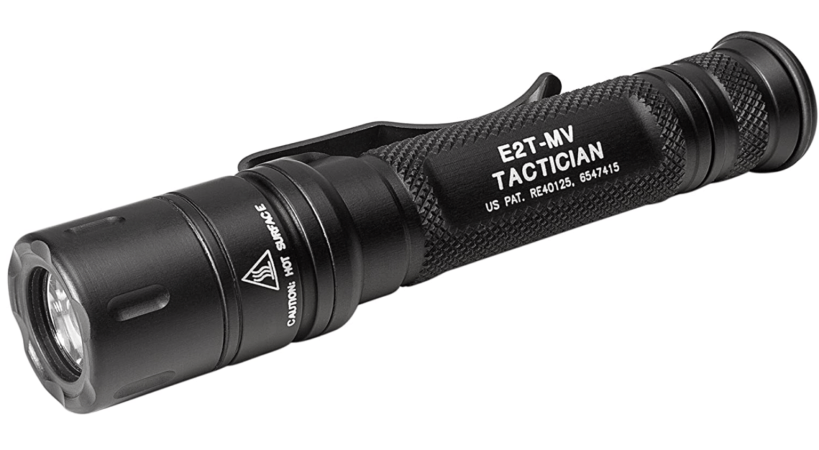We may earn revenue from the products available on this page and participate in affiliate programs.
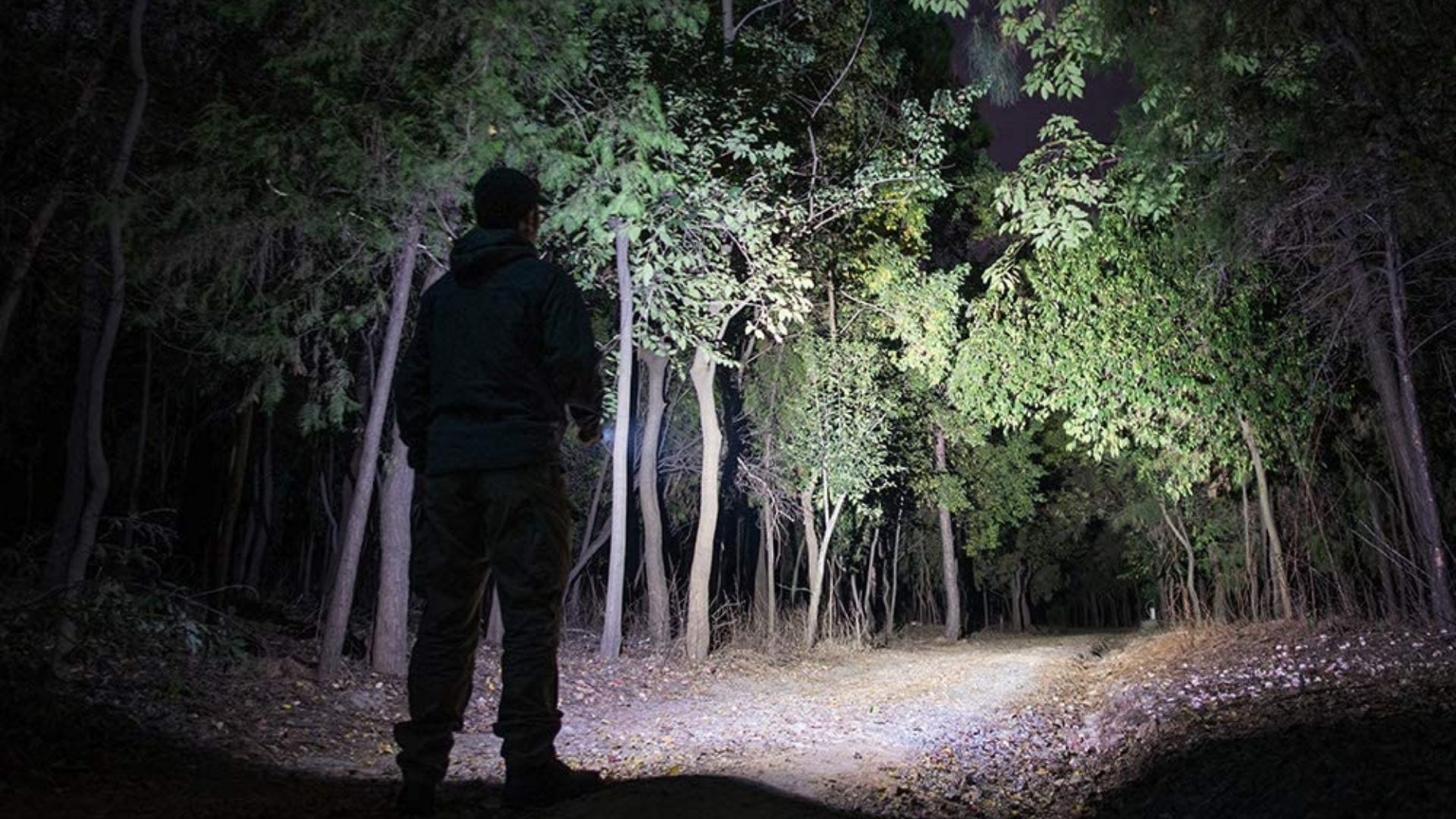
How many times have you found yourself wishing you had skipped that cheap EDC flashlight your buddy brags about every time you visit the PX? Sure, you saved some cash, but looking back now, you should have known better than to listen to a desk jockey talking up his first EDC light. Anyone can see something cool, buy it, and swear by it, but EDC gear needs to be tough and reliable. When it comes to choosing potentially life-saving gear, never compromise. You would never trust your life to a parachute rigged by someone without the red hat, so why would you trust a light with a name without a solid reputation? Sure, you might get lucky once, but when the chips are down, why gamble again?
To that end, we’ve rounded up some of the best EDC flashlights on the market. Take a gander and see which one is right for you.
- Best Overall: Olight S2R II
- Best Value: Streamlight ProTac 1L-1AA
- Best Premium: SureFire E2D Defender Ultra
- Best Rechargeable: Fenix PD35 V2.0
- Best for Keychains: Olight i1R 2 EOS
- Best Mini: Streamlight MicroStream
- Best Tactical: SureFire E2T-MV Tactician
Best Overall
Olight S2R II
Best Value
Streamlight ProTac 1L-1AA
Best Premium
SureFire E2D Defender Ultra
Best Rechargeable
Fenix PD35 V2.0
Best for Keychains
Olight i1R 2 EOS
Best Mini
Streamlight MicroStream
Best Tactical
SureFire E2T-MV Tactician
Types of EDC flashlights
- Tactical light: The most common EDC flashlight is the tactical light. Much like ink serves an octopus, these defensive lights produce a blinding light that gives users an opportunity to escape from a threat without needlessly escalating a situation. Beyond their impressive lumen output, these lights often include bezels with protrusions designed to give them a little extra bite in worst-case scenarios. Due to the beating they may be required to endure, these lights are virtually always constructed with aluminum, thanks to its solid balance between its strength and light weight.
- Penlight: Like defensive EDC lights, penlights are designed for easy everyday carry, but often, they have a significantly lower output than their more aggressive brothers. Instead, these lights are intended for administrative and other professional tasks, such as pipe inspections. As the name suggests, these lights have a size and style similar to large pens. Good quality penlights are made with durable plastic, although aluminum versions do exist as well.
- Keychain light: As the name implies, these lights attach to your keys rather than clipping onto some pocket. Usually, these flashlights are supplemental EDC lights designed for finding locks in the dark or digging through a handbag. As such, they prevent self-defense lights from being pressed into service on a daily basis, leaving them free to focus on their intended mission.
Key features of EDC flashlights
- Brightness: EDC flashlight brightness may be the most critical feature to consider. Modern manufacturers list brightness ratings in lumens in order to shed some light on a particular unit’s output. Most serious tactical EDC flashlights will produce at least 250 lumens on their highest setting. Of course, higher output levels often kill batteries in under five minutes, but you can be sure your hand will feel the heat long before that happens.
- Power source: An EDC flashlight can receive power from three different battery types, each with their own pros and cons. Standard alkaline batteries, such as AAs or AAAs, are cheap, but they usually lack the power necessary for high-lumen outputs. Specialized batteries, such as the common CR123A, perform better than alkalines due to their size-to-output ratio which allows lights to reach full output levels. Also, consider using rechargeable batteries, many of which use convenient USB chargers.
- Environmental resistance: Take a close look at an EDC flashlight’s resistance to environmental factors, particularly water. Using standardized tests created by the International Electrotechnical Commission, an IP rating makes at-a-glance environmental resistance evaluation a breeze. A light with an IPX7 rating is water-resistant for up to 30 minutes at a maximum depth of one meter, whereas an IP67 rating indicates the same level of water resistance with complete protection against dust ingress. Higher numbers indicate better protection.
- Durability: EDC flashlights take a pounding each and every day, so finding one designed to last must be a top priority for any serious carrier. A durable body, impact resistance, and the ability to resist the elements are part of what set apart quality products from the snazzy lookalikes commonly found on today’s market.
- Deployment method: An EDC flashlight that is quick and easy to deploy is a light that you will actually use. First, when considering a tactical light, see whether or not the light in question has a tailcap switch, at least for the high output mode. Second, investigate how the light is stored when not in use. Most lights will include one of two pocket clip designs: a fixed, one-way clip and a removable, reversible clip.
Benefits of EDC flashlights
The prepared individual understands the value of a reliable light made to the highest standards of quality, durability, and performance. A quality light is a convenient tool for odd tasks, such as looking for a dropped set of keys, and some may use their daily carry flashlights for menial admin or inspection tasks in a professional context. Of course, EDC practitioners need a light that can do these tasks and more, since many of us rely on our tools for an added layer of security. Sure, situational awareness increases overall personal safety, but as anyone who has been deployed (and plenty who have not) knows, even hypervigilance cannot be a cloak of invisibility. A proper EDC flashlight provides a secondary level of safety and security by serving as an extremely capable less-lethal self-defense tool, creating a literal wall of light that allows the user to disappear at a moment’s notice.
EDC flashlight pricing
When it comes to picking at a quality EDC flashlight, be willing to drop a little extra cash. As a general rule, flashlights under $50 fall into one of two categories: trash or gimmick. Plenty of off-brand lights exist here, although some known names make budget-friendly keychain or other backup lights. The one exception to this rule seems to be Streamlight, which makes a few good quality lights that perform and last well while managing to include a number of desirable features. Of course, most people will find themselves dropping somewhere between $50 and $100 for a durable, reliable, and well-engineered EDC light. These lights offer high lumen outputs, excellent durability, and a number of other unique features, including more than a few with USB rechargeable batteries. EDC lights that top $100 tend to be fewer, but strong quality comes with the price tag, which is not surprising since many of these lights bear the SureFire nameplate.
How we chose our top picks
When reviewing new gear, we much prefer to go the hands-on route, but sometimes, a lack of resources may thwart our attempts to get our mitts on some cool gear. When that happens, we listen to those who have firsthand experience. We comb through online reviews on Amazon, enthusiast blogs, professional publications, and more to bring you the best, most comprehensive information we can. We sift through it all, keeping the gold and tossing the rest. For this review on EDC flashlights, we relied on our hands-on experience with the Streamlight ProTac 1L-1AA and other flashlights.
